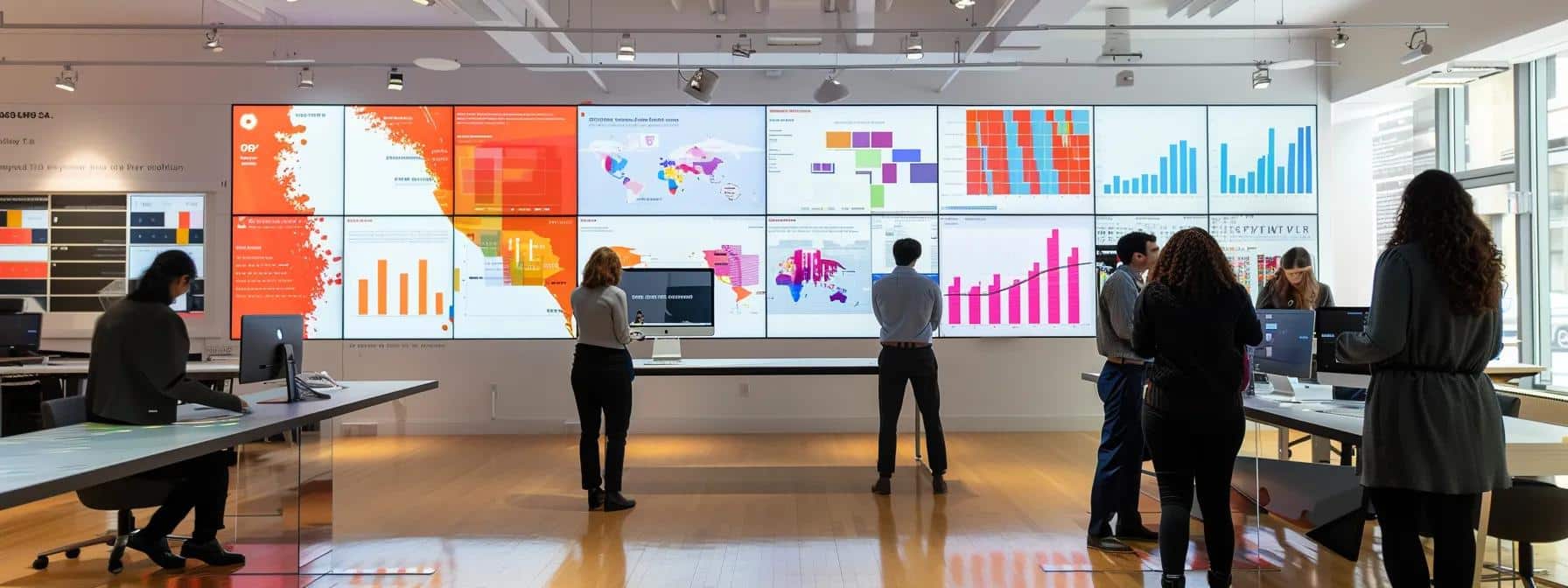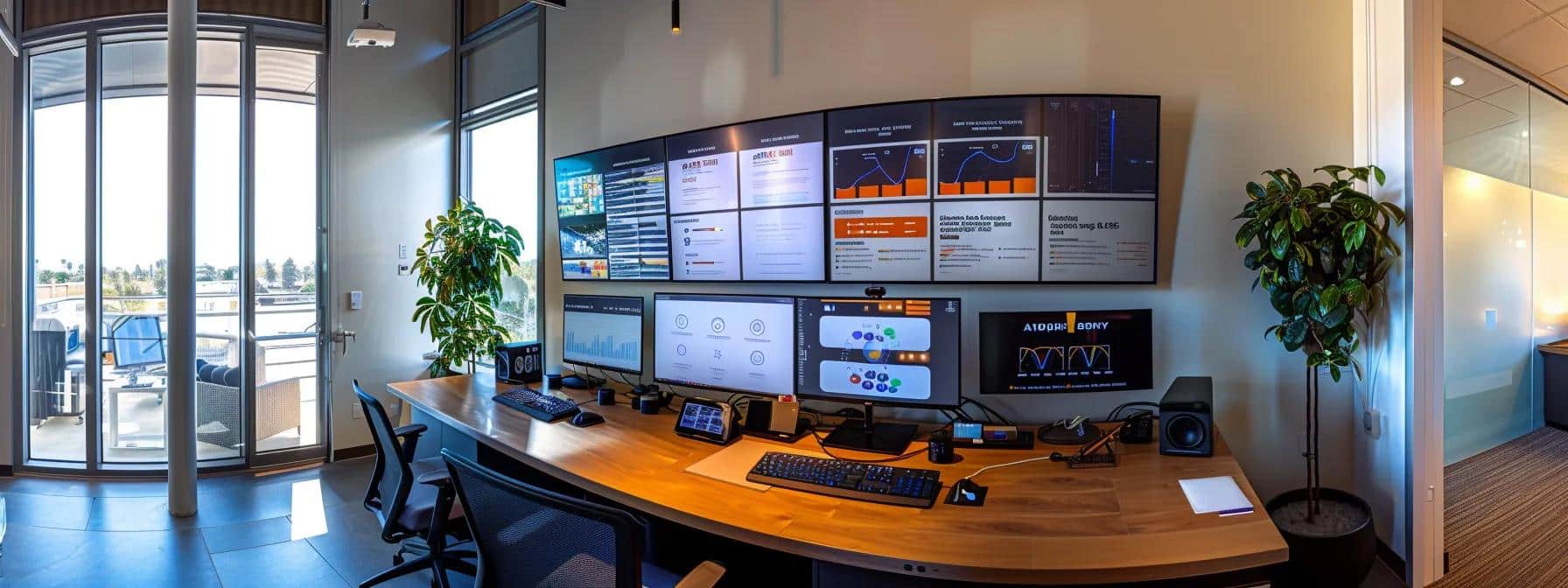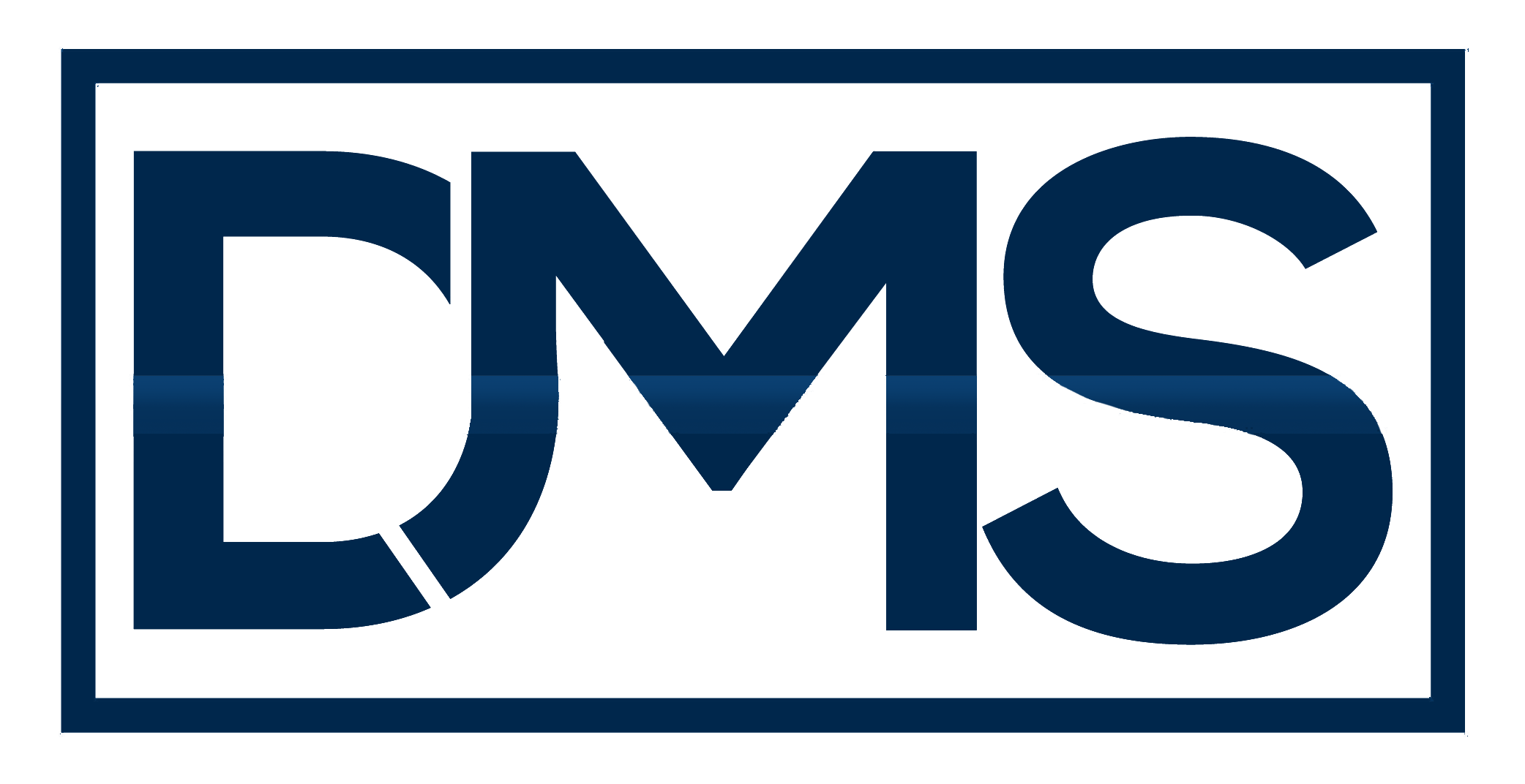
Stay up to date on the latest digital marketing topics.
News & Trends

Transformative SEO Link Building Strategies for Enterprises
How to Build Powerful Links for Your Brand
Building a robust link profile is essential for any brand that aspires to increase its visibility in search engines and establish authority in its niche. In today’s competitive digital ecosystem, backlinks not only serve as a vote of confidence from other websites but also help boost your site’s pagerank, drive organic traffic, and reinforce your brand’s reputation online. By understanding the true value of link building, brands can develop targeted strategies that support overall marketing objectives, foster trust among audiences, and ultimately lead to more conversions. For instance, many innovative companies leverage specialized services to refine their strategies and even recommend that you contact experts in the field to address specific challenges. This article explores the critical aspects of link building—from appreciating its importance for branding to implementing actionable strategies for securing high-quality links—and provides step-by-step guidance for incorporating link placement into an effective seo strategy.
The journey begins with an in-depth analysis of why strong links matter for your brand. Every backlink functions as an endorsement, a signal to search engines that other reputable sources find your content valuable and authoritative. Moreover, a powerful link profile is instrumental in overcoming competitive barriers by demonstrating your commitment to transparency and user relevance. With digital marketing evolving rapidly, companies must continuously invest in research, keyword analysis, and competitor insights. This article not only highlights why link building is indispensable for your marketing strategy but also outlines best practices for generating organic links that elevate your brand’s online presence, bridging the gap between superior content and digital visibility.
Transitioning into the main content, the article discusses how to build links strategically while seamlessly integrating content marketing, user experience improvements, and data-driven insights for long-term SEO success.
Understand the Importance of Building Strong Links for Branding

Strong links serve as a foundation for enhancing brand credibility and search engine performance. In the context of branding, links act as endorsements that signal trust and authority to both users and search engines. The more reputable sites that link to your content, the greater the likelihood that your site will rank higher and gain increased exposure.
Recognize the Benefits of a Solid Backlink Profile
A robust backlink profile brings multiple advantages. First, authoritative backlinks can lead to a significant boost in search engine ranking, directly influencing your site’s visibility and organic traffic. Furthermore, high-quality links can establish your brand as an industry leader, encouraging users to view your website as a go-to resource. Research has shown that sites with strong backlinks receive up to 40% more referral traffic, which can improve lead generation and conversion rates. Additionally, a diverse range of links can help safeguard your site against algorithm updates, ensuring long-term stability in SEO performance. Over time, these benefits cumulatively build brand reputation, making your digital presence more resilient and competitive.
Analyze the Impact of Links on Search Engine Rankings
Search engines like Google consider both the quantity and quality of backlinks when assigning search rankings. Links from well-respected sites act as endorsements, which can elevate your content in search results. Studies indicate that a single link from a domain with high authority may be equivalent to hundreds of links from less reputable sites. Consequently, understanding how links affect search rankings is essential. For example, a well-optimized link profile can lead to a 30% increase in organic traffic over a period of several months. Such improvements directly affect the visibility of your content, driving more qualified leads to your website. This data-driven approach highlights the importance of not just acquiring links, but securing the right links that yield measurable ranking improvements.
Learn How Links Drive Traffic to Your Website
Backlinks are a critical conduit for referral traffic—users clicking on links embedded in foreign websites. This type of traffic is highly engaged since readers follow links related to topics of interest. For instance, if an authority site in your industry links to your content, its audience is likely to find your resource valuable too. Data from various marketing studies illustrates that referral traffic can account for between 15% to 25% of total website visits. Moreover, strong referral traffic often exhibits higher engagement rates, leading to more time spent on your site and improved conversion rates. This dynamic emphasizes the dual role of backlinks: enhancing SEO performance while simultaneously serving as a direct source of relevant, interested users.
Identify Effective Strategies to Acquire Quality Backlinks

Developing effective strategies for acquiring quality backlinks hinges on understanding the competitive landscape and leveraging strategic outreach. Brands must research their industry’s top performers and uncover their backlink sources. By identifying which high-authority sites are linking to competitors, you can tailor your approach to target similar publishers and sites that are more likely to feature your content.
Research Top Competitors and Their Backlink Sources
Conducting a thorough competitor analysis lays the groundwork for a successful link-building campaign. Utilize specialized SEO tools like Ahrefs, SEMrush, or Moz to audit your competitors’ backlink profiles. Identify the highest quality links they have acquired and note the content topics that attract these links. Analysis might reveal that competitors gain backlinks through collaborative research articles, guest posts, or industry roundups. Armed with these insights, you can prioritize reaching out to similar domains to propose content collaborations, ensuring your link-building efforts yield high-quality backlinks that mirror the success of your competitors. This competitive analysis can also uncover industry trends that inform your future content strategy, directly supporting your branding and SEO objectives.
Utilize Content Marketing to Attract Organic Links
Content marketing serves as a powerful catalyst for organic link acquisition. By developing comprehensive, engaging, and relevant content, you create link-worthy resources that naturally attract backlinks. Focus areas should include in-depth guides, case studies, white papers, infographics, and interactive tools. For instance, publishing a detailed white paper on “The Future of SEO in 2023” may encourage reputable industry websites to link back as a trusted resource. Promotion via social media, email newsletters, and digital PR further amplifies its reach, generating more organic interest and backlinks. Consistently updating your content with fresh data and insights ensures it remains a valuable asset, continuously drawing new links over time while reinforcing your brand’s authority.
Network With Industry Influencers for Collaboration
Building relationships with industry influencers is another key strategy for acquiring quality backlinks. Influencers can significantly amplify your content’s reach by sharing it on their platforms. Engage with influencers through social media, professional forums, and industry events. Collaborate on projects such as co-authored blog posts, podcast interviews, webinars, or research studies. For example, partnering with an established SEO expert for a joint research project can result in an authoritative piece of content linked by multiple reputable sites. These collaborations not only yield valuable backlinks but also enhance brand awareness and credibility. Over time, a strong network of influencers becomes a critical component of your digital marketing strategy, driving sustained link acquisition that supports your broader business objectives.
Create High-Quality Content That Attracts Links

High-quality content is the cornerstone of any successful link-building campaign. To attract natural backlinks, your content must provide unique insights, actionable strategies, and verifiable data that resonate with your target audience. Not only does unparalleled content drive organic traffic, but it also positions your brand as a thought leader in your industry.
Focus on Creating Valuable Resources and Guides
Developing comprehensive resources such as how-to guides, industry reports, and ultimate resource lists can significantly enhance your brand’s linkability. When you craft content aimed at solving real problems, offering step-by-step instructions, and revealing insider best practices, there’s a higher likelihood that others will link back as a source of valuable information. For instance, creating an exhaustive guide on “Advanced Link Building Techniques for SEO Success” can serve as a reference point for practitioners and industry blogs. Breaking down complex topics into digestible segments with clear, actionable steps not only educates your audience but also encourages them to reference your work in their own articles and studies.
Incorporate Data-Driven Insights and Original Research
Original research and data-driven insights provide tangible evidence to support your claims and elevate the credibility of your content. When you share unique research findings, such as the impact of high-quality backlinks on conversion rates or the correlation between referral traffic and sales growth, you create referenceable content that others are likely to cite. Including statistical analysis, infographics, and case studies enhances your content’s value and makes it an authoritative resource in the digital marketing field. For example, if your research demonstrates that brands with a diverse backlink profile see up to 35% improvement in search engine ranking, this finding can spark discussions and encourage other experts to link back to your detailed analysis.
Use Engaging Visuals and Infographics to Enhance Appeal
Visual content, such as infographics, charts, and videos, plays a crucial role in making complex information accessible and engaging. High-quality visuals can break down dense data sets into clear, digestible information, increasing the likelihood of users sharing and linking to your content. Infographics summarizing important metrics or illustrating case studies can be particularly effective in the context of link building. For example, an infographic comparing various link-building techniques and their respective impacts on SEO metrics not only enhances user understanding but also serves as a visually appealing asset that other sites may feature. Including call-to-action elements within visuals further encourages users to have a closer look at your content, translating into higher engagement and more opportunities for organic backlinks.
List of High-Quality Content Types for Link Building
- Comprehensive guides that cover topics in-depth and provide step-by-step instructions for implementation.
- Industry reports that showcase original research, survey data, and comparative analyses.
- Infographics that transform complex data into visually appealing graphics.
- Case studies that detail successful link-building strategies and measurable outcomes.
- Interactive tools that offer personalized SEO audits or backlink analyses.
- White papers that explore advanced strategies and future trends in digital marketing.
- E-books that compile extensive research and expert opinions into a structured, downloadable resource.
Optimize Your Website for Link Building Success

Technical website optimization is as critical as content quality when it comes to link building. A website that provides a seamless user experience, is fast-loading, and mobile-responsive not only retains visitors but also encourages other sites to link to your pages. When users engage with a well-optimized site, they are more likely to share content and reference your brand as an authority in your industry.
Ensure a User-Friendly Design to Encourage Engagement
User-friendly design is paramount for fostering engagement and encouraging backlinks. A clean, intuitive layout allows users to navigate your website easily, find relevant content, and share it without hassle. Design elements such as clear calls-to-action, logical content organization, and accessible navigation menus are essential. For example, websites with well-structured content sections and an easy-to-read format tend to have lower bounce rates, which positively affects search rankings. Moreover, a visually appealing design that aligns with your brand identity creates a lasting impression, making other sites more inclined to reference your content. Investing in responsive design and user experience (UX) best practices ensures your website is equipped to handle increased traffic while simultaneously driving better SEO outcomes.
Utilize Internal Linking to Support Your SEO Strategy
Internal linking plays a key role in establishing page authority and facilitating content discovery on your website. By strategically linking related posts, articles, and resources, you create a network that distributes link equity throughout your site, helping search engines better understand the context and relevance of your content. This interconnected structure not only improves user navigation but also strengthens your overall SEO profile. For instance, linking a well-researched guide on link building to related articles on digital marketing strategies can provide additional context for readers and search engines alike. An effective internal linking strategy can also reduce bounce rates and improve time-on-site metrics, further signaling to search engines that your content is valuable and engaging.
Improve Site Speed and Mobile Responsiveness
Site speed and mobile responsiveness are critical technical factors that influence both user experience and SEO performance. Slow-loading websites discourage users from engaging with the content, reducing the likelihood of social shares and backlinks. According to various studies, even a one-second delay in page load time can result in a significant drop in conversions. Therefore, it is imperative to optimize images, streamline code, and leverage caching techniques to improve load times. Ensuring that your website adapts seamlessly to mobile devices is equally important, as an increasing number of users now access content via smartphones and tablets. Google’s mobile-first indexing further underscores the need for mobile optimization. A fast, responsive site not only bolsters user satisfaction but also positions your website as a credible source, enticing other sites to link to your optimized pages.
Table: Website Optimization Elements and Their Benefits
Before implementing your link building efforts, ensuring your website is technically sound is crucial. By improving these optimization elements, you create a digital ecosystem that not only accommodates growth but also attracts valuable backlinks that further enhance your site’s authority.
Leverage Social Media to Boost Link Acquisition

Social media platforms play a pivotal role in modern link acquisition. They serve as the ultimate vehicle for content promotion, helping to amplify your message to a broader audience and attract organic backlinks. Engaging effectively on social media can generate buzz around your content, which often translates into more sites linking to your articles and resources.
Share Content Strategically Across Established Platforms
A critical component of leveraging social media involves determining the best platforms to share your content. Not every platform may be suited for your specific target audience. For instance, LinkedIn often attracts B2B professionals interested in in-depth content and industry insights, while Instagram and Facebook are ideal for visual and engaging content. By tailoring your posts to suit the platform and using relevant hashtags, you can maximize reach and engagement. Furthermore, scheduling posts during peak engagement times ensures that your content is seen by the largest possible audience. Effective social sharing can also generate user-generated content and discussions around your brand, further promoting natural backlinking from reputable sites.
Engage With Followers to Encourage Content Sharing
Social media is not just about broadcasting content; it’s equally about building a community. Actively engaging with your followers by responding to comments, hosting live sessions, and participating in discussions can significantly boost your audience’s willingness to share your content. When your social media engagement strategy is robust, your followers become brand advocates, increasing the probability that influential websites and blogs notice your content and link back to it. For example, brands that demonstrate consistent, authentic interaction on platforms report up to a 30% increase in organic share rates. Consistent engagement transforms passive followers into active promoters of your brand’s content, driving both traffic and quality backlinks.
Participate in Relevant Communities and Groups
Online communities, forums, and social media groups provide a rich environment for organic link building. Participating in industry-related discussions and contributing valuable insights builds trust and authority. When you provide solutions or share expert opinions, community members may reference your content as a reliable resource, creating natural backlink opportunities. Additionally, joining groups on platforms like Facebook, LinkedIn, or niche-specific forums allows you to keep your finger on the pulse of industry trends and preferences. By dedicating time to meaningful interactions within these groups, you not only enhance your brand’s reputation but also facilitate collaborative opportunities where content cross-promotion and backlinking naturally occur.
List of Social Media Strategies for Enhanced Link Acquisition
- Post content on platforms where your target audience is most active and engaged, such as LinkedIn for B2B insights or Instagram for visually-driven content.
- Employ a consistent posting schedule that aligns with peak engagement times to ensure maximum reach.
- Use compelling headlines and visual assets to enhance your content’s shareability and attract organic links.
- Engage with comments and messages actively to build relationships that encourage content sharing.
- Leverage paid promotion when necessary to boost high-quality content’s initial visibility and drive subsequent natural backlinking.
- Collaborate with social influencers who can amplify your content’s reach and lend credibility to your brand.
- Join and contribute to online communities, discussions, and groups where sharing valuable links is a natural outcome.
By integrating these social media strategies, brands can significantly enhance their chances of acquiring robust backlinks and improving their overall SEO performance.
Monitor and Evaluate Your Link Building Efforts

Effective link building is not a one-time task; it requires ongoing evaluation and refinement. Monitoring your link-building efforts allows you to identify which strategies are successful and which need further adjustment. Regular audits ensure that you maintain a high-quality backlink profile that continually supports your brand’s digital presence.
Use Analytics Tools to Track Backlinks Performance
Analytics tools are indispensable in tracking the performance of your backlink profile. Tools like Google Analytics, Ahrefs, SEMrush, and Moz provide detailed insights into where your backlinks are coming from, their quality, and how they impact your search engine rankings. These platforms enable you to monitor referral traffic, measure the impact of individual links, and determine whether your link-building strategies are yielding the desired results. For example, if a particular guest post on a high-authority site results in a significant spike in referral traffic and improved rankings, you can replicate that strategy for future success. Detailed reporting and tracking help ensure that every backlink you earn contributes effectively to your overall SEO performance.
Adjust Strategies Based on Performance Insights
Data-driven insights are critical when refining your link-building efforts. When analytics reveal trends—such as specific content types generating more backlinks or certain outreach methods yielding higher-quality links—it’s essential to adjust your strategies accordingly. Flexibility in your approach allows you to allocate resources more efficiently, focusing on tactics that deliver the most significant results. For instance, if your analysis shows that content shared via social media drives higher engagement and more links than other methods, intensifying your social media promotion may be a wise tactic. This iterative process of testing, analyzing, and optimizing will help you continually improve your backlink profile and maintain a competitive edge in search engine rankings.
Regularly Audit Links to Maintain Quality Control
Maintaining the quality of your backlink profile is just as important as acquiring new links. Regular audits are crucial to identify and disavow any low-quality or spammy links that could potentially harm your search engine rankings. Conduct regular link audits to ensure all backlinks are from reputable sources and are contextually relevant. For example, using tools like Google’s Disavow Tool in conjunction with comprehensive link auditing can protect your website from potential penalties due to harmful links. By establishing a systematic review process, you can proactively manage your link profile, ensuring that your SEO performance remains robust and that your brand’s credibility continues to grow over time.
Table: Key Metrics to Monitor for Effective Link Building
Regular evaluations using tools like these help ensure that your link-building strategies remain effective and that your website’s SEO performance continues to improve over time. By closely monitoring these metrics, brands can not only celebrate successes but also address and rectify any potential issues, ensuring a sustainable and high-quality backlink profile.
Key Link-Building Takeaways from Dapper Market Solutions LLC
In summary, building a powerful link profile is fundamental for enhancing your brand’s online presence and authority. Recognizing the benefits of a solid backlink profile, analyzing the impact of quality links on search engine rankings, and implementing strategic content and outreach practices all contribute to a robust digital footprint. By continually optimizing your website, leveraging social media to share valuable content, and regularly auditing your backlinks, you can ensure your brand remains competitive and relevant in today’s dynamic digital landscape.
Prioritizing these strategies ensures that every step of your link-building journey is aligned with your overall marketing goals. Moving forward, brands must adopt an iterative, data-driven approach that not only focuses on acquiring links but also on maintaining a healthy and high-quality backlink environment. With continuous evaluation and adaptive strategies, your link-building efforts will yield sustained, measurable success that drives organic traffic and strengthens your online reputation.
Frequently Asked Questions
Q: How do backlinks improve my brand’s reputation? A: Backlinks act as endorsements from other reputable sites, signaling trust and authority to search engines and users alike. This increased credibility helps improve your brand’s reputation and boosts search engine rankings.
Q: What tools can help monitor my link-building performance? A: Tools like Google Analytics, Ahrefs, SEMrush, and Moz are excellent for tracking backlinks, monitoring referral traffic, and evaluating the quality of your link profile.
Q: How often should I conduct a link audit? A: It is recommended to perform a link audit at least quarterly to identify low-quality or harmful links and to ensure your backlink profile remains robust and beneficial for SEO.
Q: Why is quality more important than quantity in link building? A: High-quality links from authoritative sites have a greater impact on search rankings and credibility than numerous low-quality links. Focusing on quality helps protect your site from potential penalties and enhances your overall SEO performance.
Q: Can social media really boost link acquisition? A: Yes, by sharing valuable content and engaging with your audience on social media, you can increase your content’s visibility and encourage organic backlinks from reputable sites.
Explore More From DMS
The Team, The Team, The Team!

